Crossing the South China Sea

Peregrina's Journey
Peter and Margie Benziger
Fri 6 Jul 2012 05:37
01:42.9N 110:19.6E
CROSSING THE
SOUTH CHINA SEA
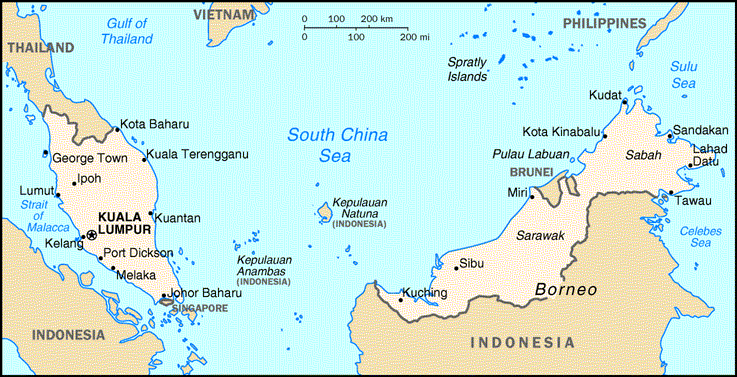
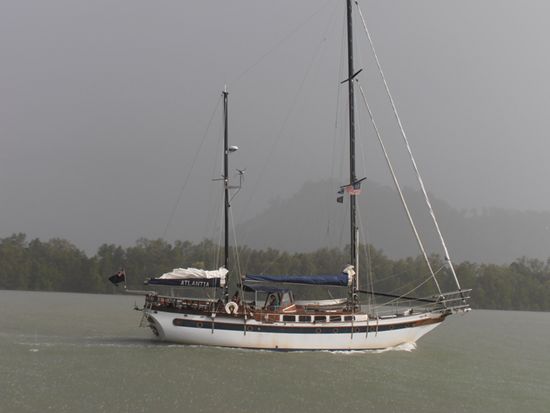
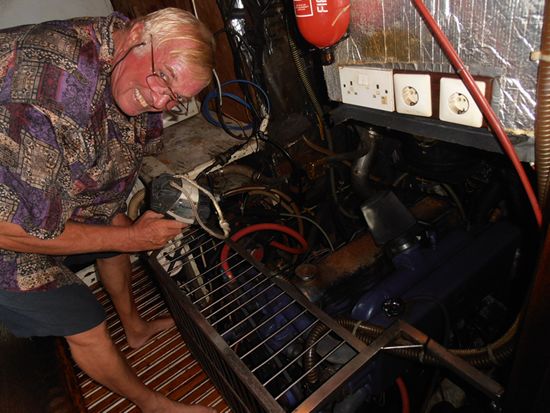

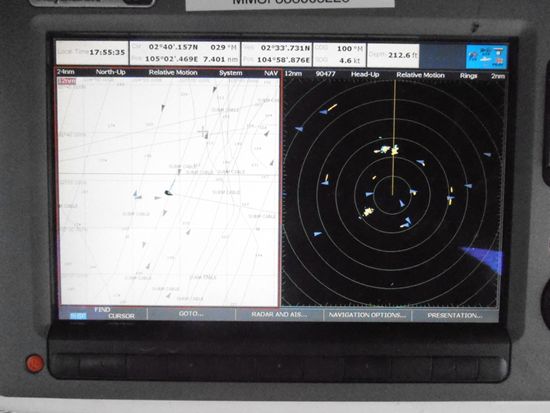
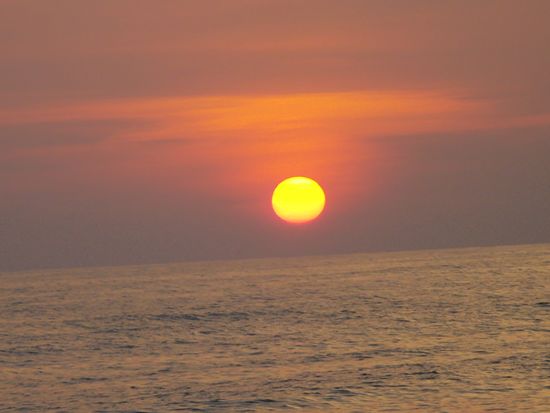
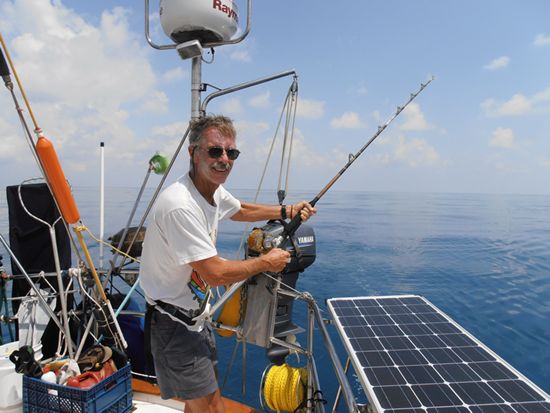
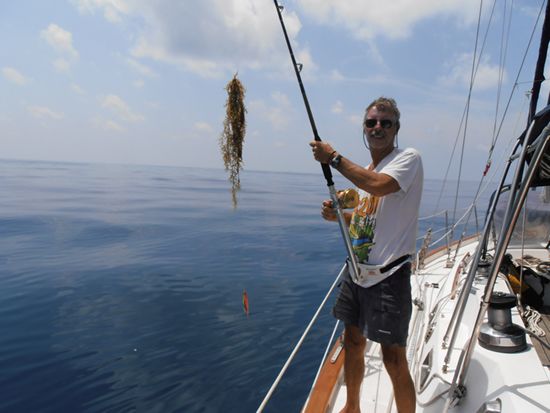
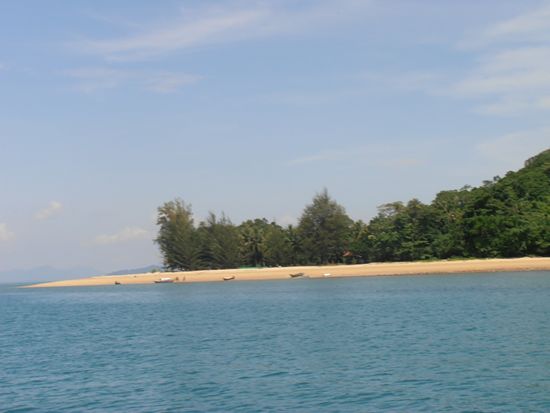
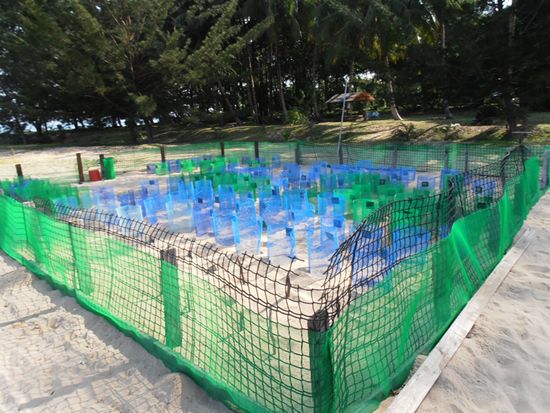
The South
China Sea separates Peninsular Malaysia (South of Thailand) from East Malaysia which shares a border with Indonesia. The city we are headed to is Kuching. This region is commonly known as Borneo. Please see
the map below because, if you are like us, this part of the world is not very
well known…In the map Penninsular Malaysia is the white territory on the left, Borneo Malaysia the white territory on the right.

Peregrina
sailed as far as Kuala Terengganu, in northern end of Peninsular Malaysia. Then
we backtracked a little to the island of Tioman, which is an excellent jumping
off point for the crossing to Kuching.
However, the
rhumb line (direct line) between Tioman and Kuching passes through the
Indonesian island groups of Keputauan Anambas and Keputauan Natuna. Here’s what the cruising notes say about this
area:
“There have
been a number of recent reports of piracy off the Indonesian Anambas and Natuna
Islands. To date these attacks have been restricted to merchant ships but
yachts are vulnerable. It is suggested that a route be chosen to keep well away
from these islands.”
The route we
chose was to pass south of the Anambas island group and then turn back
northward a little to round the northwestern end of Borneo. The trip would be about 410 miles.
We decided
to travel with our good friends, Will and Margaret from Scotland, who cruise
aboard their 51 foot Formosa ketch, Atlantia.

In the weeks
leading up to our passage, Atlantia
had experienced a number of mechanical mishaps. Most worrisome was the fact that
Atlantia’s generator had been
malfunctioning. At stops along the way, a myriad of mechanics had come to “fix”
the problem. In one town, EIGHT people showed up, although Atlantia’s engine
room has space for only one person. Please
note that, although the Malaysians are quick to respond to a call for help,
real knowledge about marine systems and hands on experience with pleasure
yachts is almost non-existent. By the
time we got to Tioman, Atlantia’s
generator was officially dead and may have been killed more by the mechanical
“help” than its’ original problems. On
top of that, the night before we left Tioman, Atlantia’s raw water hose sprung a leak. Her skipper patched it up with epoxy and
emergency tape and hoped that it would hold.


Atlantia’s VHF radio also stared malfunctioning so that, during
our crossing, all communication between our two boats would be distorted by
large amounts of static making it really hard to understand them.
Nevertheless, we departed at about
0630. (6:30am to all you
landlubbers!) Once we left the protected
shelter of the island of Tioman, we encountered 1.5 meter seas and winds of 20
knots very close to our bow which made holding the course very challenging. In
addition, there was a stiff northerly current so we decided to motor sail at
about 45 degrees. Normally, we would
just “crack off” a few degrees so that we could sail but that meant heading
directly toward the pirate-prone Indonesian islands. Margie would have none of that!!!
Thus, our first day was quite uncomfortable
with the bow plunging up and down the steep seas, water continually coming
across the deck and everything down below finding any excuse to fly from its
designated location.
Shortly
after dark, we entered the shipping lane which runs to the northeast from
Singapore. This is a very busy area as
you will see from all the AIS targets in the picture below. The map on the left
shows the chart with the AIS targets. At night, we split the screen to also
show the radar since some boats do not have AIS. On the radar screen, you will
see twelve ships and three rain squalls surrounding Peregrina.

In the
shipping channels, some ships answer when hailed and some do not. The AIS is a
great advantage because it gives us the name of the ship and the CPA (closest
point of approach). We spent about five
hours crossing the shipping lane. Often
the conversations we had with the vessels were challenging. One vessel (564
feet in length) stated; “hold your course we will pass clear ahead of
you.” After the distance separating us
had been reduced to about a mile away (remember they travel about 18 knots) and
the CPA indicated a collision course I call the vessel. They answered: “Peregrina, correction, it looks like we
will pass close astern…ok,ok?”). One
ship passed so close that we actually had a 7 foot bow wave reach us. I HATE shipping lanes!
Later that
night, Atlantia’s skipper, Will,
called on the VHF radio to say that the raw water pipe to his engine had
started leaking again and they would have to slow down.
The route we
charted would to take us to the south of the Anambas Islands, but not by much,
since every mile we traveled to the south was distance lost. Margie’s watch started at 1100 and ended at
0300. All was well. I came on deck as we
approached the Anambas Islands. Not long after, I noticed that there was a light behind Atlantia but it did not broadcast and AIS signal which was a bit unsettling. Most
likely, it was just a fishing boat, but, late at night your mind conjures up
all sorts of things…
About 0400, Atlantia slowed dramatically and started
changing course frequently. I called to
ask what was going on. I could not hear
Margaret very well so I decided to speed up Peregrina to place us nearer to Atlantia and the unidentified following
boat. My mind was racing as I thought
that Atlantia could be a target for
boarding by an inflatable launched from the mystery boat. I got
out our million candle power search light and started to shine it directly at
the intruder but it was too far away to illuminate the vessel. I then went
below and brought on deck our police baton, flare gun and riot control size
pepper spray. I loaded the flare gun with a white magnesium flare. I was “ready
for action!” but quite uncertain of what was, in fact, happening.
I called
Margaret and asked if everything was alright. She replied “yes” but the radio
transmission was too broken up for a conversation. Late at night, with not a lot of sleep, your
mind goes to dark places and I thought: If Atlantia
was boarded and had to answer a radio hail, would Margaret be able to respond "no"...probably NOT. I gunned the engine and inserted
Peregrina right in the middle of the two boats and started run through “action
plans” which I knew would be quite useless.
Well, Atlantia proceeded slowly, with us
following behind ready to do battle until, shortly before dawn, the mystery
boat veered to port towards the Indonesia islands. By sun up, we were alone
again. Were we being followed or was it
just a fisherman toiling away at his livelihood in the middle of a dark and
stormy sea? I guess we’ll never know…
Overnight,
Will had fixed his water leak so they were up to speed again. As we proceeded eastward and the day wore on,
the breeze veered more towards the south and the waves diminished. We had a
great sailing breeze now and Peregrina was really “kicking up her heels” with
speeds between 6.8 and 7.5 knots. We
were racing towards Borneo on Day Two!
As night
fell, we reefed down (reduced sail) and continued at a slower speed for
safety. We had some brief thunder cells
come through accompanied by strong wind and lightening. Even with radar,
thunder cells can be hard to spot at night so Peregrina generally reduces sail
shortly before sunset.
Poor Atlantia’s challenges were not over
though… About 2100, (9pm) the second night, they called to say that they
thought they had a rope or some sort of sea debris tangled in the propeller.
They shut the engine off and said they were going to wait to try to fix this
problem since Will was desperately short of sleep. He had successfully reduced the water leak to
the main engine earlier that day but was “knackered” and needed to rest. We slowed down again to match their speed.
About three
hours later, they called and said that they had put the engine into reverse and
thought that the rope cutter attached to the propeller shaft had freed the
entanglement. But now, they were concerned because the engine was running very
rough and they might have contaminated fuel!
What more could go wrong? Will was back in the engine room and had
changed his main engine filters 3 times already.
We continued to plod along slowly until about
0530 when they called again to say that they had re-directed their fuel supply
to a “day tank” and that the fuel seemed to be ok.
During the
night, and all through Day Three, we were crossing popular fishing grounds and
had to avoid large fishing boats all
around us. It is important not to pass
too close to the sterns since they often are pulling very long nets.
We also
encountered a large number of blue or black plastic bottles tied together every
few miles marking some type of deep-sea fish traps or nets. A week earlier, the Polish catamaran, Azzura, had snagged one of these “bottle
buoy” networks and had to spend 8 hours waiting for the sun to come up before
diving overboard to cut the ropes free.
It should be illegal to have these buoys in the water with no flag on a
pole … although at night I doubt we could not see them anyway. On Peregrina, if we have the motor on, the
person on watch has to be ready to throttle down and take the prop out of
gear. A broken prop would be a disaster
out here in the middle of the ocean so far from any shipyard.
Anyway,
moving onward, the next day dawned a golden red.

During the
day, we tried to fish and Peter caught the monster shown in the photo below.


We finally
made it to Borneo and anchored off a small island called Pulau Satang
Besar.

It is a National Park and a working Turtle Sanctuary. At night, Green Turtles come ashore to lay
eggs. You can see the tracks in the sand. The park rangers then remove the eggs
from the nest and place them in enclosed pens to ensure as many hatch as
possible. The night we arrived, two
turtles laid 214 eggs between them and the rangers also released 18 newborn
turtles back into the water. It was a
great day for Mother Nature!

We will
spend at least the next two months in Borneo and, as usual, we have not really
decided what we will do next. You’ll
just have to stay tuned…!